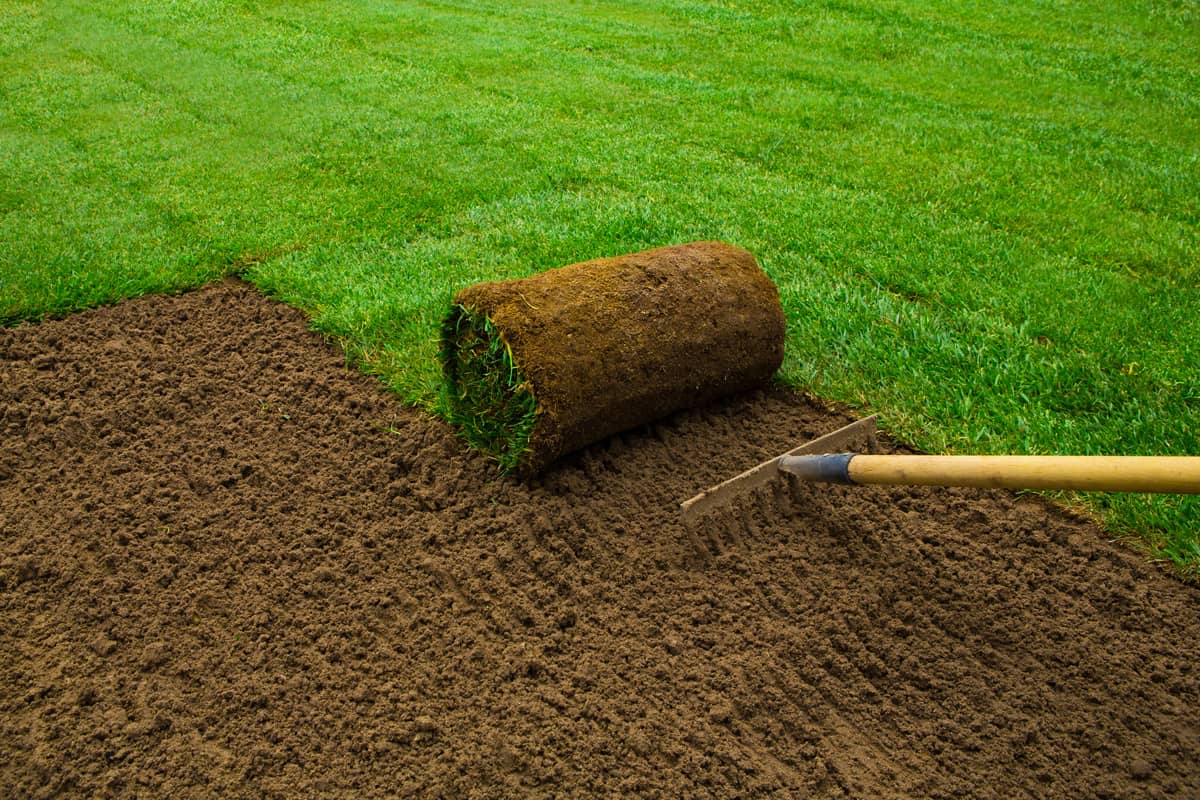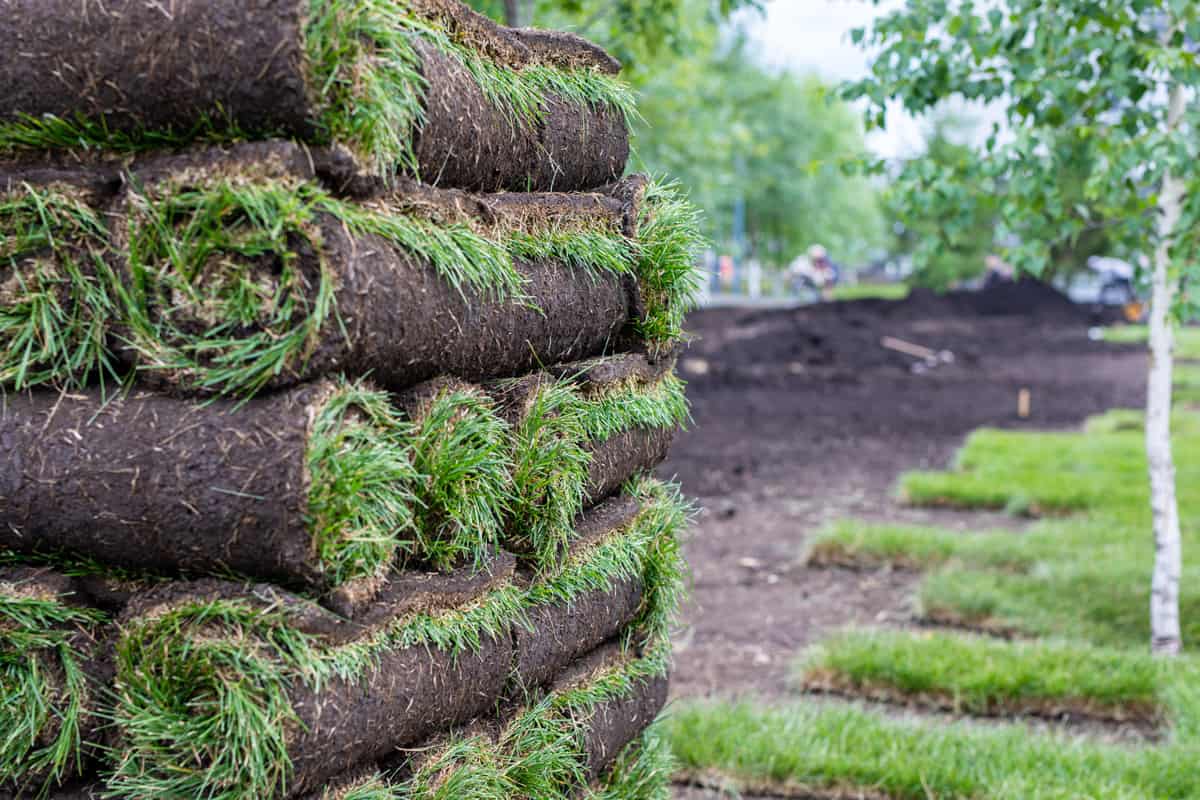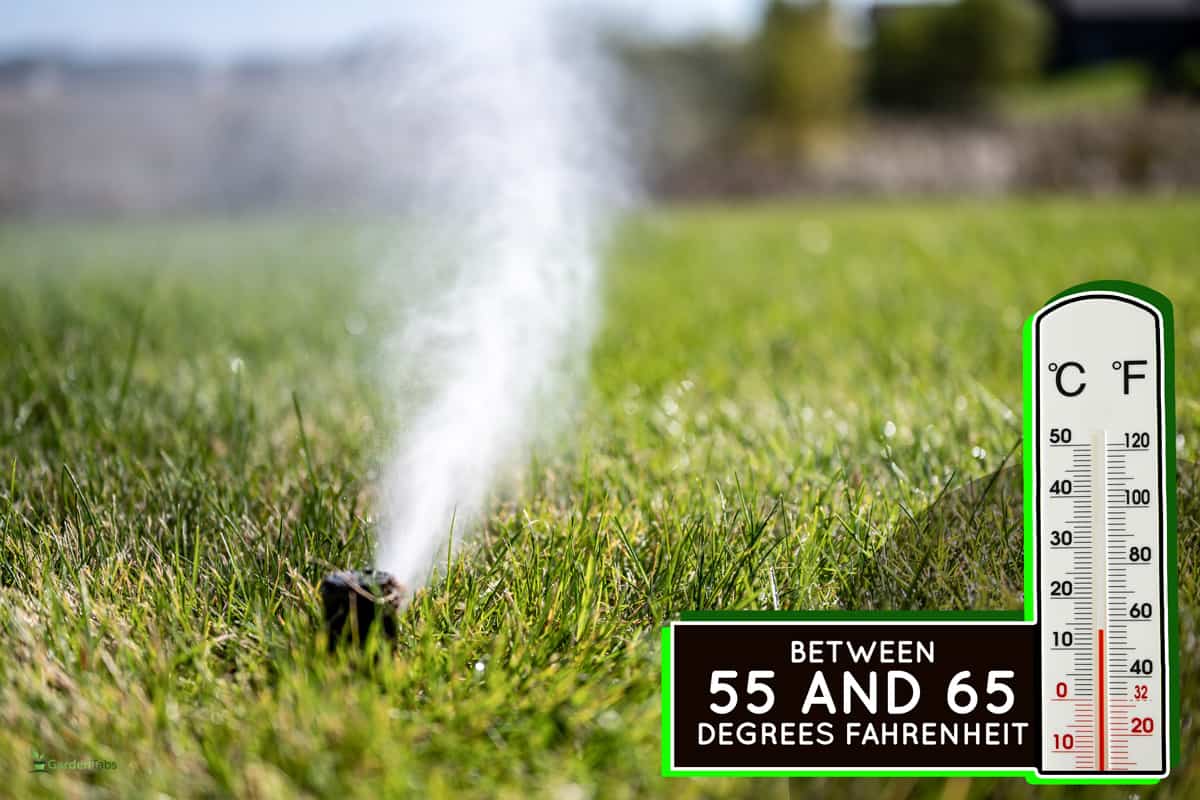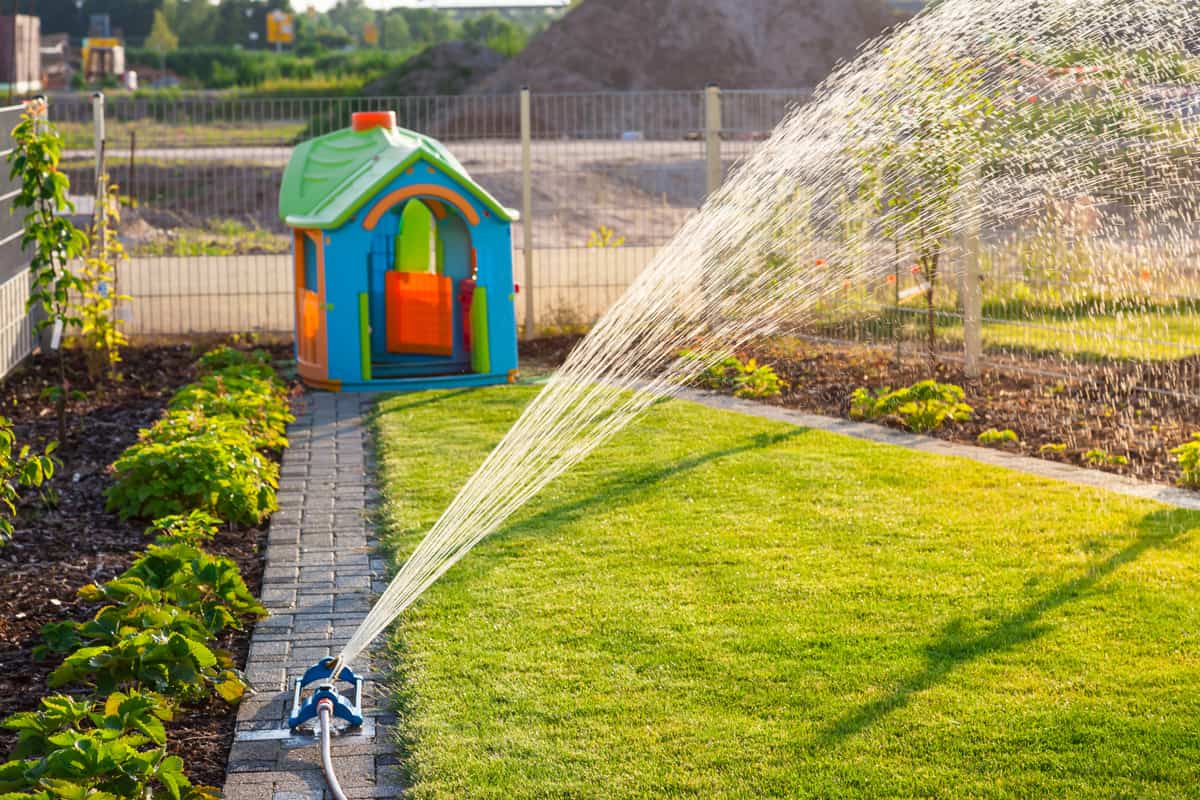As a gardener, you may be wondering if new sod should be winterized or not. Luckily, we have done some research for you on this topic, and here is what we found.
Yes, you should winterize new sod. By taking the necessary actions to properly prepare your sod for winter, it will be able to handle snow and cold temperatures.
Winterizing new sod is not as difficult as it sounds. Keep reading to get detailed information on how to winterize new sod and how cold weather can affect it.
Should You Winterize New Sod?

New sod should be winterized. The best time of the year to get your new sod ready for a long winter is when cold weather starts to set in.
When winter is around the corner and the weather changes, nature puts on a spectacular show as a farewell to the long days of hot, sunny weather.
As the hours of darkness increase, you may notice a drop in temperature and dew on your grass in the early morning. During this period, magnificent red and gold leaves may cover the green that is beginning to return to your sod after it turned brown in the summer.
During this time, it's easy to forget about your sod. But the months of September, October, and November constitute the peak period during which your sod and garden require your attention the most.
Knowing how to protect your sod throughout the winter months is essential. Sod experiences a burst of activity in the fall as it prepares to enter its dormant phase.
While sod maintenance is typically given the most attention in the spring, knowledgeable groundskeepers and homeowners recognize that fall is the time to look ahead and prepare your sod for the coming season.
If you take care of your sod and winterize it during this period, you won't have to worry about it during the colder months.
Winterizing your new sod simply means preparing it for the cold weather. When you winterize new sod, you're ensuring that it will be healthy when the temperatures begin to warm up.
How Do I Winterize New Sod?
You want your sod to look perfect—just the proper height, the ideal shade of green, and with no brown spots in sight. So, you start to dread the winter months because of what they do to your lawn.
However, it's possible that the problem isn't the freezing temperatures, snow, or ice. The problem may just be that you do not know how to get your sod ready for the winter.
Follow the guidelines below for winter maintenance tips to get your sod ready for the cold season:
1. Aerate Your Sod
Aerating the soil in the fall is important since it helps alleviate a problem that many homeowners encounter: compacted soil.
If you aerate your sod in the fall, it will help your lawn breathe better throughout the winter.
Aerating the soil allows it to retain moisture, makes it easier for aeration and drainage to take place, and increases the number of soil organisms, which in turn helps to make nutrients available to your sod.
You should not try to do this yourself. You can contact your local garden center or landscaper and ask for assistance with aerating your sod.
2. Add More Seed To Your Sod
Overseeding your sod as part of the preparation for winter is a good idea. You should overseed the sod during the fall, at least 45 days before the first frost of the season.
The process of overseeding means adding more seeds to your lawn. This will help to fill in any gaps in your sod that may have been caused by the strain of the summer season, insects, or disease.
The addition of more seed at this time of year will help thicken your sod. This will make your sod better, help to reduce thatch buildup, and increase its ability to fight off insects.
Check out this grass seed on Amazon.
3. Add Fertilizer
It is best to add fertilizer to your sod in the fall while preparing for the colder weather. If you fertilize your lawn in October and November, it will be better able to withstand the hard winter weather that's to come.
Before applying fertilizer to your sod, make sure that it has been cleaned of any debris and leaves, as this will allow the fertilizer to be absorbed more effectively into the root system.
If you apply fertilizer to your sod, it will enter dormancy more easily and come to life earlier in the spring.
The amount of fertilizer you apply to your sod will vary depending on the quality of the natural soil, the level of growth that you desire, and the type of sod that you are growing.
Check out this fertilizer on Amazon.
Step 4: Cut Your Sod
After you have raked, aerated, and fertilized your sod, it is time to cut it. Cutting your sod around 30 percent shorter than you would normally will help your lawn "wake up" in the spring and appear more beautiful.
Having shorter sod in the winter can also help prevent a buildup of dead sod in the spring. It will help reduce matting and allow for the more rapid absorption of moisture from snowfall into the soil and roots.
Does Cold Weather Affect New Sod?

If you don't take the proper precautions, cold weather can affect and damage new sod. There are a variety of things that might contribute to winter sod damage, including an abundance of snow and ice, as well as temperatures that are typically lower than freezing.
Frost forms when water vapor in the atmosphere cools and settles. If severe frost hits and settles on your sod, it will likely damage the sod.
The sod may be damaged by frost when it attempts to draw water through its blades. The water can freeze inside the sod and damage it.
Note that this might not be the case for every variety of sod. When it comes to turfgrass, this should not occur. When new turf is laid, it will remain dormant until spring, when the temperature is warmer, and the roots will grow deeper in search of water and nutrients.
This turf is more durable, especially during the winter months when the temperature is below freezing. Frost does not usually have a detrimental effect on turf.
Turfgrass won't grow during the winter months. It will stop using as many resources to grow and instead redirect that energy toward maintaining its viability until the temperature rises high enough to create optimal growing conditions.
What Temperature Is Best For New Sod?

The optimal conditions for laying sod are temperatures between 55 and 65 degrees Fahrenheit. But the optimal growth conditions for various types of grass are found at slightly different temperatures.
The summer season is by far the most difficult time of the year to lay sod. Installing new sod during periods of high heat and drought increases the risk that a heatwave could kill the sod. It would require more frequent watering under those conditions.

How Long Does Sod Last?

If you give your sod the care and attention it needs, it could last for decades. The conditions of lawns and landscapes evolve over time. As landscapes age, trees produce more shade, and sod tends to be neglected.
In addition, thinned lawns lose good topsoil over time due to the effects of heavy rain or large raindrops from overhead trees, which can damage sod.
To Wrap Up
Although laying sod at the end of fall might not seem like a good idea due to the freezing temperatures of winter, this is not always the case. You can successfully get your sod ready for winter. All you have to do is aerate the sod and add fertilizer and seeds.
If you enjoyed reading this post, here are similar articles you may like:
Should You Overseed New Sod? [And When To Do This]


